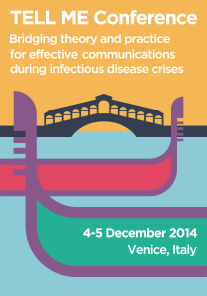What lesson can we learn from communication during 2009 a-h1n1 pandemic?
A systematic review on main international scientific bibliographic database on communication and preparedness in 2009 A-H1N1 pandemic by TELL ME experts gave some interesting clues that hindered communication.
Authorities
- Changes in influenza terminology during the initial stages of pandemic appeared to cause some confusion (swine, Mexican, H1N1, type A flu);
- internal communication among institutions and public agencies was an issue, too, with most healthcare professional finding information from multiple, non institutional sources;
- the H1N1 pandemic also showed several examples of mediated risk conflicts, for example between health and education authorities, in relation to closing schools;
- some health agencies decided to use the social media, but sometimes these new advanced tools were used accordingly to old‐traditional communication strategies.
Public
- Knowledge of mode of transmission and other important informations on H1N1 virus and the disease was influenced by ethnicity, education level and household income: authorities need to use information about the characteristics of communities and individuals, giving particular attention on the socio‐economic status, in their communication planning efforts;
- in the public there was a high level of misconceptions about the virus and the disease. Many thought that H1N1 was a type of avian flu, that it could be catched eating pork meat, but also via contaminated water, insect bites or sexual contacts, that the disease was an immunodeficiency disease, that influenza vaccine against seasonal flu could effectively or very effectively protect one against the new H1N1 virus and that there are no effective drugs available to treat the disease;
- people were doubtful about safety, efficacy and utility of vaccines, showing mistrust on governments which were supposed to be colluded with pharmaceutical companies. Governments were accused in fact of taking too little action to prevent and control the pandemic or on the other hand, of being moved by pharmacy industry. In general people felt they were not being given all the facts from the authorities;
- people felt that advice about personal protective measures (for example staying at home if sick) was common-sense, but nevertheless were afraid of possible consequences on their work, since pandemic seemed to be relatively mild.
Media
- The main sources of information were the mass media, such as television and radio, as well as the print media, such as newspaper or magazine. The Internet was used as a source of information, mainly among young people and among people with a higher education level. According to an Italian and a US study general practitioners (and family pediatricians) were considered the most reliable source.
- despite using media as a key information source, it was also common among people to express distrust over the information provided by media and the reasons behind media coverage. Public distrust in media and the sensationalizing of health related stories can also be an obstacle to take the risk seriously and to undertake precautionary measures. A belief that risk has been overstated is associated with an increased sense of frustration and a reduction in the likelihood that people will prepare in the short‐term
- whilst a systematic analysis of newsprint media coverage has found no evidence of exaggerating the content of reporting, in qualitative studies participants found that the high levels of H1N1 coverage disconcerted and created a false sense of alarm
- New social media showed to be sites which facilitated the spreading of ideas by anti-vaccination movements and websites. They in fact made doubts about the safety and effectiveness of pandemic influenza vaccines spread out.


